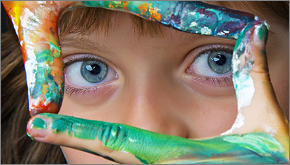Art and Design
Art and Design is a vital and integral part of children’s education and we aim for all our children to become confident and enthusiastic artists. Art provides children with opportunities to develop a range of ways in which they can share and express their individual creativity, whilst learning about and making links with different types of art in our society. Art enables children of all abilities to communicate what they see, feel and think through the use of colour, texture, form, pattern and different materials and processes. We believe Art and Design contributes to children’s personal development in creativity, independence, judgement and self-reflection. It enables them to develop a natural sense of wonder and curiosity about the world around them. Our objective is to ensure that there is progression of art skills across the school which enables children to develop and practice their skills.



Art and Design
This document shows how Art is taught in our school from
Nursery to Year 2
Art and Design in the Early Years Foundation Stage (EYFS)
Giving children opportunities to be imaginative, explore different materials and develop their ideas is an important part of the Early Years Foundation Stage, mainly within the 'expressive art and design' area of learning.
Children are encouraged to practise their handling, moving and control skills (for example, by painting or using clay). Materials should be accessible for children to develop and explore their ideas and to be imaginative.
Art and Design in the Key Stage 1
The content of art and design teaching and learning is set out in the 2014 National Curriculum for primary schools in England. Pupils should be given opportunities to use a range of materials creatively to design and make products through drawing, painting and sculpture. They explore different techniques in using colour, pattern, texture, line, shape, form and space.
Another important aspect of the art and design curriculum is learning about the work of a range of artists, craft makers and designers, describing the differences and similarities between different practices and disciplines, and making links to their own work.
Nursery Gallery
Reception Gallery
Year One Gallery
Year 2 Gallery
Useful Documentation
Activities and resources
How can I support my child with art?
1. Get messy!
Try to get hold of as many different types of drawing and painting resources as you can to let your child get creative and explore creating art using different materials. Paints, chalk, crayons, pens, pencils, modelling clay and much more can be found in discount shops. Just don’t forget to put lots of newspaper down first!
2. Use household objects creatively
Alternatively, instead of buying materials, let them get creative using things around the house – for example, pasta and pulses to create pictures using glue. You could even experiment with colour-changing art – find out more here.
3. Keep a sketch book
Encourage your child to keep a sketch book. Suggest that they take it with them when they go out so that they can look for things to sketch – a tree, a building, a scene. Alternatively, if they see something they would like to draw, take a photo on your phone and let them sketch from it when they are home.
4. Celebrate your child's art
Praise your child’s creations and encourage them not to get disheartened if they feel they have made ‘mistakes’. Explain that art is about being creative and trying out different things. There is no right or wrong way to do things. You could even ‘frame’ their work using coloured paper or card and create a little gallery on the kitchen wall or in their bedroom to display their work.
5. Discuss and enjoy art together
Find out about local art galleries or museums that you can visit with your child. Encourage them to talk about what they see and to share their opinions – about subject matter, colours, what materials the artist used, and so on.








